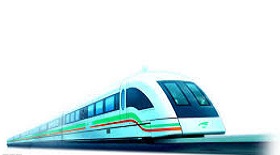The examples for new technologies
History shows that new technologies do not necessarily replace old ones. The following examples can be used for reference.
1) The maglev train is suspended in the air by magnetic force, without contact with the ground and no friction with the ground. In theory, it's fantastic. The principle was put forward by German engineers as early as 1922. However, the actual manufacturing found that it is expensive. Because the magnetic force is inversely proportional to the gap, the straightness of the orbit is extremely high. The world's first maglev line began commercial operation in Birmingham in 1984 and was dismantled and replaced with a wheeled system in 2003. Shanghai's maglev demonstration line is current the only commercial high-speed line in the world.
2) Railway traction locomotives were first used as steam locomotives (1825), later as electric locomotives (about 1840), and then as internal-combustion engines (about 1920) 70 or 80 years later. Today, steam locomotives are largely out of use, and the internal-combustion engine has been running alongside the electric locomotive for nearly a century. Although high-speed trains are now widely powered by electricity, internal-combustion vehicles are still in widespread use.
The gasoline engine was invented in 1883. The diesel engine was invented nine years later. For many years, diesel engines have been favored because of their great efforts. They are almost the only power source in ships, trucks and mobile engineering machinery. Now, the future of diesel engines is in jeopardy as a major source of particulate PM10 and NOX emissions.



